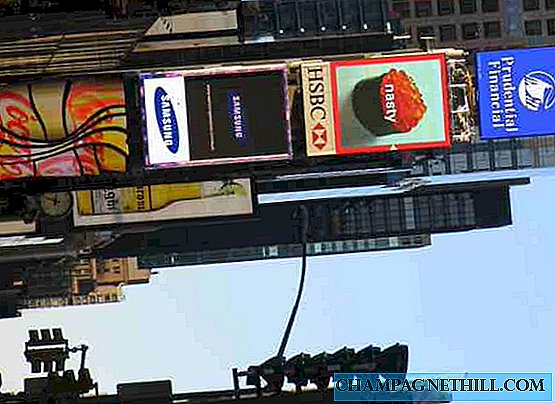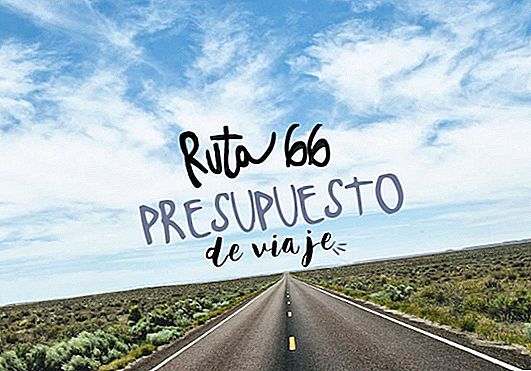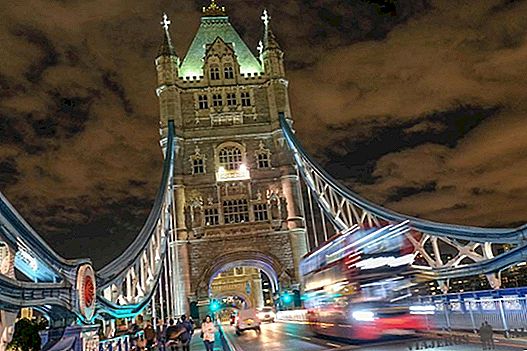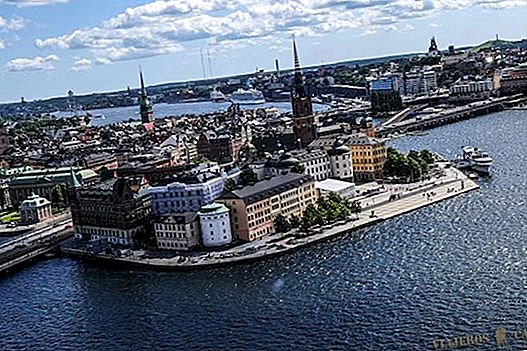
Riga is one of those European capitals of which one does not have too many references. You ring those three countries together that are in northern Europe, but without jumping to the Nordic countries. Although they are also to the east, but far from the Balkans ... Yes, those that were formerly of the USSR and then divided ... Lithuania, Latvia and Estonia ... Well, of those three, Riga is the one in the center. Little did we know about the capital of Latvia before visiting it, and we have to admit that our expectations were rather weak. We were wrong: Riga seemed to us a rather pleasant city (although with some drunkenness down the street), beautiful (not in vain its historical center is Unesco Heritage) and with a few interesting curiosities (did you know for example that it is the place with more buildings Art Nouveau from around the world?). So, if, like us, you have no idea what awaits you here, we tell you 25 things to see and do in Riga.
1. The first thing we recommend is to go to the Town Hall Square (Rātslaukums), where some of the most emblematic places of Riga are located and in whose center you can see a roland statue. The representation of this knight with the drawn sword used to be seen in the main squares of medieval villages, and represents freedom and justice. By the way, the tip of his sword is the Km 0 of Riga, and from here all distances are measured.
2. At the back of this gentleman is the incredible House of the Blackheads, Baroque and Gothic, and certainly one of the great jewels of Riga. Unfortunately, as with most buildings in the historic center, it is not the original: after the bombings of World War II, little remained in the heart of Riga and what we see today is a reconstruction. It was the headquarters of those known as "Cabezas Negras", a group of powerful single merchants of the Hanseatic League, and hence the name. It is not the only one you will see on a trip through the Baltic Capitals, in Tallinn there is another that belonged to this association.
3. Before leaving the square we advise you to visit the Museum of the Occupation of Latvia, a very advisable place to know the history of the country, especially its occupation. Yes, for about 50 years (1940-1991), Latvia was first occupied by the Nazis and then by the Soviets. Inside you will see graphic documents, objects of the time such as the pact for the borders between Hitler and Stalin, and an area where to know the impact that the KGB had on the country. Entering is free, although it is advisable to leave a donation (at 14 and at 16 there is a guided tour in English that costs € 3). At the time we visited Riga (August 2019), the building was under renovation and they moved the exhibition to Raiņa bulvāris 7 street. In principle in 2020 they will open again in their old location. More information.
4. If you want to further expand knowledge about the history of KGB in Riga, approach the Corner house, where the Committee was headquartered in Latvia. Here the arrests were carried out (the cells can be visited), the interrogations and even the executions of those suspected of conspiring against the regime. You can make a very interesting virtual tour on this page.
5. Very close to the Plaza del Ayuntamiento awaits you an essential stop in Riga: the Lutheran Church of San Pedro. Its construction is endless demolitions and repairs (if you look you will see different styles, predominantly Romanesque, Gothic and Baroque). Of which he did not get rid of tower, that by the seventeenth century it was the tallest wooden tower in Europe. But it lasted only 29 years, a ray hit her and ended her. Then, in a new reconstruction, copper plates were added that today give it that characteristic appearance. If you are not satisfied with contemplating this bell tower from the street, you can go up to one of its intermediate levels to have the best views of the historic center of Riga. You can only climb by elevator (€ 9).
Details of the Church of San Pedro
6. On the back of the church you will find a small market of local products (handicrafts, paintings, amber jewelry ...) and a curious Bremen Musicians statue (you know: the cigar, the dog, the cat and the rooster). And what does he do there? Simple: Riga and Bremen are twinned since the Latvian city was founded by a bishop of the German city!
7. Another religious temple that cannot be missing in your itinerary is the Riga Cathedral, considered the largest medieval church in the Baltic States. Built at the beginning of the 13th century, during its history it underwent different extensions and remodeling, until it looked as we see it. However, its greatest treasure is housed inside: its enormous organ. He joined the cathedral in 1883 and at that time was the largest organ in the world (6718 tubes). You can make the visit for a price of € 5, or attend the small concert that every day (except Sundays) is done at 12:00 (€ 10), or the longest concerts. Here you can see the schedule. Also the pretty Cathedral Square It is a great place to have a coffee in one of its decorated terraces.
8. Unlike Tallinn, Riga does not have a Wall well preserved, which does not mean that it does not exist. To see what is left of it, we advise you to visit the Troksnu street and get to the Swedish Gate. Go through the old wall through this door and turn right, that large yellow elongated building that appears next to you is known as the Jacob's Barracks, former war warehouses converted into restaurants, cafes and shops. A few steps from there rises the Powder Tower, where that material was stored, and today houses the War Museum.
9. Did you know that Riga is one of the cities in the world with more Art Nouveau buildings? This artistic style, characterized by the use of sinuous lines and natural elements that both became fashionable in the late nineteenth century (also known as Modernism, Liberty, etc ...), is well present in the capital of Latvia. In the early 1900s, Riga was an important city of the Russian Empire, and enjoyed fame and well-being. So in a few years hundreds of buildings of this style were built. Specifically we advise you to approach the street Alberta Iela, an open-air museum!
10. There is another set of houses that are very famous in Riga, known as The three brothers (Trīs brāļi). They are three contiguous buildings, from three different eras: the oldest one was built in the 15th century and is Gothic in style. The next one is from the 17th century and follows the current of the Dutch mannerism. The last and most recent one, dates from the end of the 18th century and is in the Baroque style. They are located on Mazā Pils Street (numbers 17, 19 and 21), right next to the Catholic cathedral of Santiago de Riga, that since you are, you can take a look.
One of the many art nouveau buildings in Riga
11. And speaking of brothers, as we already told you, the 7 Sisters (or also the 7 Cushions) of Stalin stand out in the Moscow skyline, which have been reproduced by other cities that belonged to the USSR (such as Warsaw). Riga also has a building of pure Soviet style: we talk about Palace of the Academy of Sciences. Impress and cool a lot. You can go up to the “Panorama Riga” viewpoint on the 17th floor, paying the entrance fee of € 5.
12. Although if we talk about viewpoints, we cannot forget that of the TV tower. It is the tallest tower in the country, with 368 meters, however the observation deck is "only" 98 meters high. The bad thing is that it is far from the center to arrive is not very simple. In addition they are currently reforming it, so we were satisfied seeing its beautiful silhouette from the Akmens tilts bridge.
13. Two other alternatives to contemplate Riga from the heights are: National Library of Latvia, which on its 11th floor has a very cool viewpoint (and free) on the Daugava River and the city in the background, in addition the building is a pass (closed on Sundays). And the panoramic terrace of Radisson Blu Hotel, with a close-up of the Orthodox Cathedral, in this case you will have to pay what you consume (beware, if you go at night they apparently charge € 5). Look at the views.
14. If you went to the Academy of Sciences and therefore already crossed the tracks, do not return to the center again without taking a tour of the Riga Central Market (open every day from 09 to 19). In addition to that in this type of markets you can feel the true beat of a city, that of Riga has a peculiarity: it is inside some old hangars, which the Germans used to store their zeppelins. There are a total of 4 mega constructions, each dedicated to one type of product (the fish market, the meat market, the milk market and the vegetable market). You will also find a food court with quality and cheap restaurants. We ate a hamburger and a pizza that were of death (especially the pizza, mmm!).
* This is one of the places that we include in our post of 7 restaurants where to eat in Riga (good and cheap).
15. From there why not take advantage and give a walk along the Daugava river, better if it is at sunset. In the end you will reach the Riga Castle, which is currently the residence of the president of the country. Tip: there are boat rides that cover part of the river.
Riga Market Food Court Zone
16. Attached to the castle, and back to the historic center of Riga, is the Ukrainian Greco-Catholic Church, which we include in this list, not by itself but by the small square where it is, which we found charming and very little tourist. And another place, this one with much more atmosphere, is the Livu Square. full of flowers, street musicians and a constant crowd of people. Here are a handful of buildings that will capture your attention: the first is the Mikhail Chekhov Theater, one of the most important theaters during the Soviet era. Another is the headquarters of the “Rīgas pilsētas Būvvalde”(Something like the Department of Urban Planning), which looks like a castle with two ostitos on one of its facades. And the last one a curious mansion known as “the house of cats”, On whose roof two angry black iron cats appear (it has its history…).
17. If you want to stretch your legs and surround yourself with green (without leaving the city) you can approach the park Bastion hill (Bastejkalna). It is separated from the old walls so, at the time, it was the moat that surrounded the entire city. Today you can navigate it in one of the characteristic wooden boats.
18. On the avenue that delimits the park in the east is the column of 42 meters that was erected to honor the memory of the dead during the War of Independence (1918-1920). At the top of the column you see the Freedom Monument, a statue that holds in its hands 3 stars (they represent the 3 regions of the country: Kuerzeme, Vidzeme and Latgale). The monument is guarded by two guards and every hour a simple, but curious, change of the guard takes place.
19. Another park, much further from the center, which houses another much more controversial monument, is the Victory Park. And the monument in question is the Victory Monument which honors the Soviet army that expelled the Nazi invaders in the Second GM.
20. At this point in the visit you will have walked a few times down the street Kaļķu iela, the main artery of the old city, around which the whole network of narrow streets opens (don't miss out Krāmu iela, our favorite little street in Riga!). But if you want to get out of the heart and have a drink or dinner, we recommend the street Dzirnavu iela, with trendy stores and lots of atmosphere.
Detail of the Freedom Monument
21. The Orthodox Cathedral of the Nativity It is one of the best things to see in Riga. It is beautiful, yes, but also interesting: during Soviet times, when of course religion and cults were forbidden, this cathedral was used as a planetarium! Do not hesitate to enter (free): it is beautiful and full of icons and paintings on the walls. Another Orthodox church that deserves a visit is the Church of the Blessed Trinity, reddish pink. It is across the river and you will not find any tourists.
22. Have you dared to kick this part of the city? Then there is a stop that may surprise you: the Train museum. Actually we do not enter the building, but outside there are several old trains that you can enter. Especially there is one that attracts attention: a carriage of prisoners of a Russian train from the beginning of the 20th century, with its cells and its cabins for the guards. A curious visit in Riga.
23. They say that if you don't try the black balm in Riga It will be like not having been in the city. But ... what is that black balm? It is a liquor of herbs and vodka, very strong and not suitable for all palates. Although we have to be honest, we don't try it :-p
24. If the day is rainy and cold, or you just want to surround yourself with art, you have to go to Latvian National Museum of Art, the most important in the country, where works by Russian and Baltic artists are found. The ticket price is € 6, more info. Another option is to attend a ballet or opera play at the Latvian National Opera.
25. However, if the day accompanies, it is hot and you want to see the Baltic Sea, there is a highly recommended excursion: the one that goes to the Jurmala Beach, a very popular area among locals to go on summer weekend. It is only 25 km from there and is easily reached by train (the ticket costs about € 2).
Here you have a map with all the essential things to see and do in Riga:
These are the essential visits for us on a trip to the capital of Latvia. And you? Do you know more things to see and do in Riga?

Save on your trip
Flights Cheap to Riga: bit.ly/2ko0kwE
accommodation cheap in Riga: bit.ly/2lrUvib
Stay withAirbnb and get€ 25 discount: here
Activities and excursions in Riga: bit.ly/2lO2rdw
Rent a car with the best discounts: bit.ly/2xGxOrc
Compare prices in the van rental: bit.ly/2IFbMeB
Travel insurance IATI with a5% discount: bit.ly/29OSvKt
Books and travel guides: amzn.to/2HRtLzH
All our articles about the Baltic Capitals











